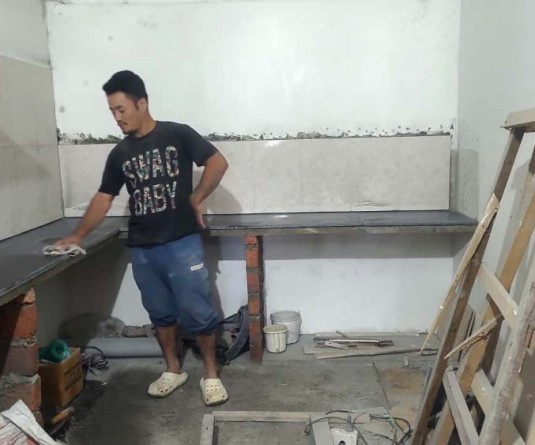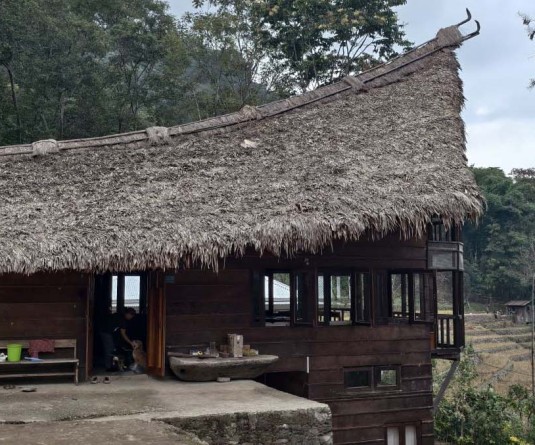A farmer returns home with firewood from a jhum field. This traditional mountain agriculture practice, while often misunderstood in larger “mainstream” thinking, has been sustained generations in the North-East. A "Northeastern" perspective, some say, could reshape agricultural policy. (Morung File Photo)

Morung Express News
Dimapur | February 5
Is North-East (NE) India truly on the periphery? The region’s ‘unique position’ was put in spotlight and interrogated by journalists and experts gathered at the recent 19th National Meet of the Network of Women in Media, India (NWMI) in Guwahati.
For Linda Chhakchhuak, an independent journalist from Shillong, Meghalaya, the “periphery” needs reimagining, especially in the context of the region.
“When we talked about the periphery in the 1980s, I think we meant it more as a geographical location in the map of India because we are very far away from Delhi,” she observed, during a panel discussion on ‘Perspectives from the Periphery: Reporting on and from North East India’ at the NWMI meet held from January 31 to February 2.

However, when the NE region views the other side from the across the border, “we find that we are in the center of the universe, and we are not at all in the periphery,” she held.
Chhakchhuak further proposed the idea of “peripheral writing” as form of resistance, terming it as “of the periphery and not from the periphery” while underlining that “it is more about ideas- the other ideas which are challenging the mainstream ideas.
She further asserted that the NE region, often seen as peripheral, is in fact central to global crises.
“We are facing a global crisis in every manner, particularly climate crisis and financial crisis. We have this ecosystem collapse, which is a result of the capitalistic, exploitative machine,” noted Chhakchhuak, who is the co-founder and publisher of ‘Grassroots Options.’
“When you locate the NE in that canvas, you see that we are the centre of every eye which wants to exploit our region, because our region is one of the few places in the world where we still have pristine forests…original food crops…diversity of humans, languages and cultures and traditions,” she held.
Hence, Chhakchhuak called for putting forward “our ideas” and convince others that “we are the ones who have the answers to some of the crisis that is happening in the world.”
The speaker highlighted the importance of ancient knowledge systems in the NE, particularly mountain agriculture, which sustains the region and contributes to biodiversity.
The mountain agriculture has sustained generations of people; however, these ideas are not acceptable to the larger “mainstream” thinking, Chhakchhuak maintained, reiterating her assertion that without the ideas of this region, any solutions in unforeseeable.
Dwelling on the issue of ‘food chain’ crisis, particularly the ‘significant threat’ of often genetically modified hybridised (cross-breed) seeds, Chhakchhuak pointed out that such seeds are not self-sustaining and “will not last for the first or second generation.”
Hybridised seeds will need the original plants to replenish the genes, found only in hills, she elaborated, adding: “The hills are actually protecting the biodiversity and they are protecting the food chain by maintaining these in the hills.”
Thus, describing the NE as the “last frontier,” the senior journalist cautioned that a ‘conquest by the global corporate’ would spell disaster for both the region and the world.
She also underscored the need for journalists to document and write about the unique cultural practices and histories, especially those of indigenous communities, which are at risk of being lost due to the passing of elders in oral societies.
Sharing about the creation of Grassroots Options in the 1990s, focusing on writing stories and perspectives from the NE, with intensive and special coverage of Jhum cultivation, Chhakchhuak contended: “It is not just about jhum cultivation. It is about life of the mountains and about stories unfettered by academic references.”
Despite financial challenges, Grassroots Options continues to publish and she held that adopting a “Northeastern” perspective could influence policy.
Evolving landscape of journalism
Sharing personal insights on journalism's evolution, independent journalist and author Kalpana Sharma identified three major changes since 1979.
First was the “exponential” changing nature of news from print to television, and to digital and social media.
The democratisation of information taking place with these changes and transformation has brought in complexity, especially in the coverage of “sensitive things” and “the gate-keeping, which is part of what is essentially journalism, is in crisis,” she said.
The second is the economy. Unlike in the 1970, Sharma observed, “there is indigenous capital that has come up, which has made deals with big capital, of their own economy.”
She illustrated the instances of oil palm cultivation which become a big issue in many parts of region and something that need serious thinking.
“Today, the whole economics of media have changed greatly, and therefore, the ways in which media can be controlled have changed greatly” leading to changes in media control and content, she added.
Citing “politics” as “the third and the most important and “obvious” factor, Sharma noted that the current political atmosphere is marked by polarisation “which is bound to affect us as journalists.”
In a democratic setup, if the media fails to be inclusive, fair, and representative of all perspectives as well as allows for the diversity essential in the country like India, there is a real problem, she concluded.
Complexities of journalism in and from NE India
With over 30 years of experience covering the region, Sushanta Talukdar, Editor of NEZine dwelt on the complexities of journalism in NE India stressing that the “NE is an artificial construct with diverse states, unresolved boundaries, and over 400 languages.”
Thus, he called upon journalists to avoid generalising the region stating, “You cannot have the idea of the entire region from reporting from one side or reporting from the other side.”
When covering the region, impartiality and avoidance of any identity tag is crucial, he insisted.
Further, space is required for reporting on NE to explain the complexities, “otherwise we leave the readers confused,” he added.
Reflecting on her experiences of reporting in Assam and Meghalaya, Rohini Mohan, an independent journalist from Bangalore, highlighted the importance of curiosity, accountability, and responsibility in journalism.
“I think a journalist is an outsider with a desire to understand. Along with the curiosity, there must be some accountability. And it is also how I tell myself that with some sense of responsibility, I report when I do come from here,” she said.
She also stressed the importance of local self-narratives and collaboration when reporting on complex and unfamiliar regions.






